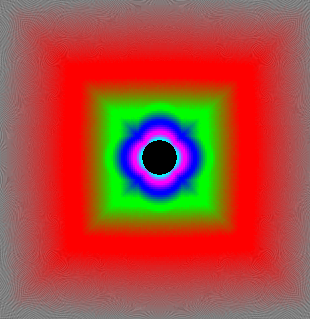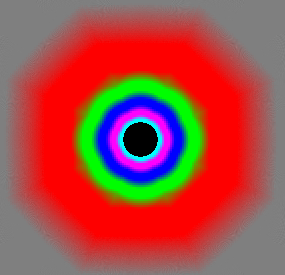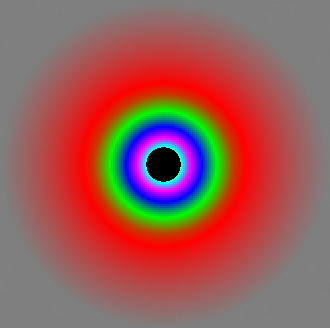AMD's Radeon HD 5870: Bringing About the Next Generation Of GPUs
by Ryan Smith on September 23, 2009 9:00 AM EST- Posted in
- GPUs
Angle-Independent Anisotropic Filtering At Last
For a number of years now the quality of anisotropic filtering has been slowly improving. Early implementations from AMD and NVIDIA were highly angle-dependent, resulting in a limited improvement to image quality from such filtering. The angle-dependent nature lead to shimmering and other artifacting that was not ideal.
As of the previous generation of cards, the quality of anisotropic filtering had become pretty good. NVIDIA’s best filtering mode was pretty close to angle-independent, and AMD’s only slightly worse. Neither was perfect, but neither was bad either.

The Radeon HD 4890

The GeForce GTX 285
However so long as no one had an angle-independent implementation, there was room to improve. And AMD has gone there. The anisotropic filtering algorithm used by the 5000 series is now truly and completely angle-independent. There are no more filtering tricks being used.

The Radeon HD 5870: Perfection
As you can see, the MIP maps in our venerable D3D AF Tester are perfectly circular, the hallmark of an angle-independent implementation. With angle-independent filtering, this effectively marks the end of the filtering arms race. AMD has won, and should NVIDIA catch up in the future the two would merely be tied. There’s nowhere left to go for quality beyond angle-independent filtering at the moment.
AMD tells us that there is no performance hit with their new algorithm compared to their old one. This is a bit hard to test since we can’t enable the old algorithm on the 5870, but certainly whatever performance hit there is, is similarly minor. In all of the testing we’re doing today, you will see results done with 16x anisotropic filtering used.
What you won’t see however is a difference, particularly with our static screenshots. When discussing the matter, AMD noted that the difference in perceived quality between the old algorithm and the new one was practically the same. After looking at matters we find ourselves in agreement with AMD; we were not able to come up with any situations where there was a noticeable difference, beyond the obvious AF quality tests that are designed to identify such changes.
Regardless of the outcome, AMD deserves kudos for making angle-independent anisotropic filtering happen. It’s demonstrably perfect filtering with no speed hit versus the previous generation of filtering; making it in essence a “free” improvement in image quality, however slight the real-world results are. We’re always ready to get better image quality out of our video cards, after all.










327 Comments
View All Comments
Scali - Thursday, October 1, 2009 - link
Here's a screenshot of my 8800GTS320 getting almost 49 fps when I overclock it:http://bohemiq.scali.eu.org/OceanCS8800GTS.png">http://bohemiq.scali.eu.org/OceanCS8800GTS.png
So you see why I think 47 fps for a GTX285 is weird. It should easily beat the 72 fps of the HD5870. Even an 8800Ultra might get close to that number.
mapesdhs - Tuesday, September 29, 2009 - link
I sincerely nope not as we need the competition. See:
http://www.marketwatch.com/story/does-amd-really-p...">http://www.marketwatch.com/story/does-a...-pose-a-...
Ian.
Johnwo - Monday, September 28, 2009 - link
so wait, can this card play Crysis?vsl2020 - Sunday, September 27, 2009 - link
AMD only introducing new things which merely would make yur frap fps go 1000 and thats it.....no new good or interesting features such as what nvidia did with physx/3d Stereoscopic or similar that would convince me thats the way to the future...why should I need to buy a new dx11gpu only can do 1000fps...I would still luv my 260+ and 60fps in batman arkhum or other games which supported phsyx or similar...AMD just bring us back to the stone age race ..who has the higher fps race......
Jamahl - Tuesday, September 29, 2009 - link
did you even read the review? what about eyefinity, you know a good way to use up those 1000fps by adding more screens?you can be stuck with your 260, you aren't really gaming unless you are gaming on eyefinity.
Zool - Monday, September 28, 2009 - link
Actualy the delaying of nvidia dx11 card will make introducing new things harder. DX11 and OpenCL means enough that u can forget nvidias physx. At least with open platform dewelopers could finaly merge gpu and cpu code and make some more usefull things than improwed water splashing,unrealistic glass shatering and curtains which just run on top of the code and act as some kind of postprocessing + efects just to maintain compatibility.(miles away from the nvidia demos)And also dx11 compute shader can make these things.
RNViper - Sunday, September 27, 2009 - link
Hey GuysNeed Eyefinity a Nativ DisplayPort TFT?
pawaniitr - Sunday, September 27, 2009 - link
maybe a 2 GiB memory will help this card at highest resolutionswaiting for that version
Troll Trolling - Saturday, September 26, 2009 - link
I think you guys from anandtech could do an article explaining why the new Radeons don't don't double performance, even with doubled specs.It happened too with the HD 4870, it had more than doubled everything (except bandwidht, that was 80% higher) and was not close from double performance.
SiliconDoc - Saturday, September 26, 2009 - link
PS - The bandwidth is not doubled.124GB/sec to 153GB/sec, nowhere near an 80% increasse, let alone, virtually double.